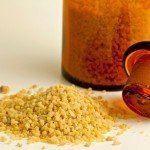5 surprising benefits of gold, frankincense and myrrh
 (NaturalHealth365) In the spirit of the recent holiday season, we thought we’d share some interesting health benefits of three of the most famous and joy-inspiring compounds: gold, frankincense and myrrh.
(NaturalHealth365) In the spirit of the recent holiday season, we thought we’d share some interesting health benefits of three of the most famous and joy-inspiring compounds: gold, frankincense and myrrh.
Of course, you may not initially think that something like gold could be good for your health in the first place, right? After all, this chemical element is better known as desirable jewelry rather than as a dietary supplement.
But, historical data shows that gold has been used as medicine in China as early as 2,500 years before baby Jesus was allegedly gifted it from the Three Wise Men. And, it turns out the other two compounds are also clearly fit to give a king, as well.
5 health benefits of gold, frankincense and myrrh
Number one: The surprising effect of gold on cancer cell growth.
A 2012 study published in the Proceedings of the National Academy of Sciences of the United States of America found that by combining green tea compounds with gold particles, prostate cancer cells were destroyed WITHOUT damaging other tissues (something conventional chemotherapy is all too “good” at).
Just remember, consuming gold in its natural elemental form hasn’t been shown to offer any benefits – it’ll just pass through your body undigested. But, gold salt compounds (like sodium aurothiomalate and auranofin) have been shown to be anti-inflammatory and able to be metabolized by the body.
Number two: Frankincense is a great solution for chronic inflammation.
Frankincense comes from the sap of Boswellia trees and has been reportedly been actively traded for over 6,000 years. Today, the compound can be found in everything from incense to lotions, perfumes to essential oils.
A 2008 systematic review published in British Medical Journal (BMJ) found that the beneficial health effects of Frankincense was “encouraging.” While the studies they looked at varied in terms of strength, they admitted there were some promising results for the compound’s ability to manage asthma, Crohn’s disease, rheumatoid arthritis, knee osteoarthritis, and inflammatory bowel disease.
The reason? Frankincense is known to contain alpha – and beta-boswellic acid and some other pentacyclic triterpenic acids – compounds which have been shown to be anti-inflammatory.
Number three: Frankincense has a healthy effect on your skin.
Authors of a 2017 study published in The Open Biochemistry Journal found that Frankincense essential oil “possesses promising potential to modulate the biological processes of inflammation and tissue remodeling in human skin.”
Topical application of the essential oil “affected many important signaling pathways that are closely related to inflammation, immune response, and tissue remodeling,” and specifically prevented the proliferation of inflamed fibroblasts.
So, it’s no surprise that many people use frankincense to treat acne and other types of skin conditions. In addition, frankincense appears to have little to no (negative) side effects. Although, as always, we recommend that you talk to your doctor before trying a new supplement.
Number 4: Great news about how myrrh is ‘bad’ for cancer cells.
Myrrh comes from the sap of a small tree from the genus Commiphora. Like gold, this compound has been shown to be toxic to cancer cells. This is thought to be due to the compounds in myrrh known as sesquiterpenoids.
Used by plants as a protective chemical, sesquiterpenoids have been shown to inhibit a mechanism that drives growth of prostate cancer, for instance.
Number 5: How myrrh can speed up the healing process and reduce discomfort.
Various studies have found that myrrh – which contains antioxidant compounds – can speed up the rate of healing and reduce neuropathic pain (at least in animal models).
Ultimately, more research needs to be done on these three compounds to determine exactly how much they can benefit your health. But, it’s probable ‘wise’ (pun intended) to look into these three gifts yourself.
Sources for this article include:

No comments:
Post a Comment